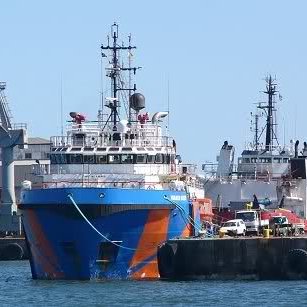MINOAS — Marine INspection rObotic Assistant System
Improving marine vessel inspection by introducing autonomous inspection technologies and by automizing the overall inspection process.
The increasing competitiveness in marine operations creates a need for new system concepts that introduce high technology value added products, facilitate the processes involved and minimize the downtimes. The need, thus, lies not only in incorporating the technological means so far available, but in changing the way the corresponding authorities stand against the challenges at hand.
MINOAS project proposes reengineering of the overall vessel-inspection methodology, by introducing an innovative system concept that incorporates state of the art technologies, but at the same time formulates a new standardization of the overall inspection process. Through holistic approach, MINOAS proposes the development of a new infrastructure that substitutes human personnel by high locomotion enabled robots and “teleports” the human inspector from the vessel’s hold to a control room with virtual reality properties. The human’s perceptual abilities are enhanced through the utilization of high resolution tools (eg. sensors) and are augmented through the parallel processing property provided by MINOAS. Following the centralized control scheme adopted in similar distributed control methodologies (SCADA), the number and the sequence of the tasks required is rearranged and the overall inspection procedure is brought in alignment with the current tendency adopted in similar inspection, exploration and surveillance tasks.
The proposed innovative system concept, considers the assembly of a robot fleet with advanced locomotion abilities and sets of tools that are dedicated to the tasks attached to the inspection process, the development of control techniques and algorithms that provide a semi-autonomous nature to the operation of the robot-fleet and a hierarchical controller that realize the virtual environment for the human inspector and adds newly developed toolboxes enabling on-line processing of the harvested data and operate as a Decision Support System in the aid of the inspector.
Project Leader
Project Collaborators
Related Publications
-
Contributions to Robot-based Vessel Visual Inspection
-
Corrosion Detection for Automated Visual Inspection
Developments in Corrosion Protection
-
Detection of Cracks and Corrosion for Automated Vessels Visual Inspection
-
On the Use of Binary Feature Descriptors for Loop Closure Detection
IEEE International Conference on Emerging Technologies and Factory Automation
-
State-of-the-Art in Vision-Based Topological Mapping and Localization Methods
Technical Report A-01-2014, Dep. Mathematics and Computer Science (UIB)
-
Indexing Invariant Features for Topological Mapping and Localization
euRathlon/ARCAS Workshop on Field Robotics
-
A Robot Application for Marine Vessel Inspection
Journal of Field Robotics
-
Vessel Inspection: A Micro-Aerial Vehicle-based Approach
Journal of Intelligent & Robotic Systems
-
Vessel Inspection Assistance by means of a Micro-Aerial Vehicle: Control Architecture and Self-Localization Issues
Technical Report A-02-2013, Dep. Mathematics and Computer Science (UIB)
-
Semi-Autonomous Visual Inspection of Vessels Assisted by an Unmanned Micro Aerial Vehicle
XXV IEEE/RSJ International Conference on Intelligent Robots and Systems (IROS)
-
A Control Architecture for a Micro Aerial Vehicle Intended for Vessel Visual Inspection
Proceedings of III Jornadas de Computación Empotrada (JCE)
-
A Micro Aerial Vehicle for Vessel Visual Inspection Assistance
Proceedings of XI International Conference on Computer and IT Applications in the Maritime Industries (COMPIT)
-
On the Use of UAVs for Vessel Inspection Assistance
Proceedings of the I Workshop on Research, Development and Education on Unmanned Aerial Systems (RED-UAS)
-
Combining Obstacle Avoidance with Robocentric Localization in a Reactive Visual Navigation Task
Proceedings of the International Conference on Industrial Technology (ICIT 2012)
-
A Control Software Architecture for Autonomous Unmanned Vehicles inspired in Generic Components
Proceedings of the XIX Mediterranean Conference on Control and Automation (MED)
-
Detection of Cracks and Corrosion for Automated Vessels Visual Inspection
Proceedings of the International Conference of the Catalan Association for Artificial Intelligence (CCIA)
-
Combination of Weak Classifiers for Metallic Corrosion Detection and Guided Crack Location
Proceedings of the XV IEEE International Conference on Emerging Technologies and Factory Automation (ETFA)
-
Appearance-based Loop Closure Detection and its Application to Topological Mapping and Image Mosaicing
-
First Steps Towards a Roboticized Visual Inspection System for Vessels
Proceedings of the XV IEEE International Conference on Emerging Technologies and Factory Automation (ETFA)




